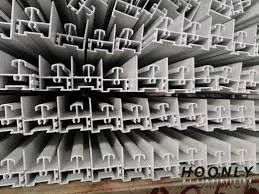Understanding the Process and Benefits of Cast Iron Casting Techniques
The Art and Craft of Cast Iron Casting
Cast iron casting is a time-honored process that dates back centuries, serving as a cornerstone in the manufacturing of various industrial, artistic, and household items. The unique combination of iron, carbon, and silicon gives cast iron its distinctive properties, making it an ideal material for different applications. As we delve into the intricacies of cast iron casting, we uncover its significance in modern manufacturing and artistic expression.
History and Evolution
The history of cast iron can be traced back to ancient China, where it was first utilized for cooking utensils and tools as early as the 5th century BC. The technique made its way to Europe during the Middle Ages, becoming a crucial component of the Industrial Revolution. With advancements in technology, cast iron soon became the preferred material for engine components, cookware, and architectural elements, such as railings and columns.
The Casting Process
The process of cast iron casting involves several key steps, each crucial to achieving the desired final product. First, a pattern is created, usually from wood or metal, representing the shape of the final object. This pattern is then placed in a mold made from sand, clay, or other materials. Once the mold is prepared, molten cast iron is poured into it, filling the cavity and taking the shape of the pattern.
After the cast iron cools and solidifies, the mold is removed, and the rough casting is cleaned and finished. This finishing process can involve grinding, machining, or polishing, depending on the application. The result is a durable, high-quality product that benefits from the unique properties of cast iron, such as excellent wear resistance and thermal conductivity.
Properties of Cast Iron
One of the reasons cast iron is so widely used is its versatile properties. Cast iron possesses excellent castability, allowing it to be poured into intricate molds to create complex shapes. Additionally, its excellent wear resistance makes it ideal for heavy-duty applications, such as engine blocks and machinery components. Cast iron’s ability to withstand high temperatures also makes it a popular choice for cookware, such as cast iron skillets and Dutch ovens, which provide even heat distribution and retention.
cast iron casting

Furthermore, cast iron has good damping capacity, which means it can absorb vibrations, making it valuable in applications where noise reduction is essential. This property is particularly beneficial in manufacturing machinery and automotive components.
Applications in Modern Society
Today, the applications of cast iron casting are extensive. In the automotive industry, cast iron is often used to produce engine blocks and cylinder heads due to its strength and ability to dissipate heat efficiently. In construction, cast iron is employed in various structural elements and decorative features, providing both aesthetic appeal and structural integrity.
Moreover, the resurgence of interest in traditional cooking methods has led to renewed popularity for cast iron cookware. Chefs and home cooks alike appreciate the unique qualities of cast iron for its ability to retain heat and create a naturally non-stick surface when properly seasoned.
Artistic Expression
Beyond its industrial applications, cast iron has also become a medium for artistic expression. Many contemporary artists use cast iron for sculptures and installations, celebrating its robust and rustic character. The versatility of cast iron allows for the creation of intricate designs and textures, making it an appealing choice for artists looking to push creative boundaries.
Conclusion
In conclusion, cast iron casting is a remarkable blend of art and engineering, satisfying the demands of both functional and artistic realms. As we continue to innovate and explore new uses for this timeless material, its significance in our daily lives remains steadfast, evoking a sense of history while paving the way for future advancements. Whether in a high-performance engine or a well-loved skillet, cast iron will undoubtedly continue to hold a distinguished place in both industry and homes for generations to come.
-
Wrought Iron Components: Timeless Elegance and Structural StrengthNewsJul.28,2025
-
Window Hardware Essentials: Rollers, Handles, and Locking SolutionsNewsJul.28,2025
-
Small Agricultural Processing Machines: Corn Threshers, Cassava Chippers, Grain Peelers & Chaff CuttersNewsJul.28,2025
-
Sliding Rollers: Smooth, Silent, and Built to LastNewsJul.28,2025
-
Cast Iron Stoves: Timeless Heating with Modern EfficiencyNewsJul.28,2025
-
Cast Iron Pipe and Fitting: Durable, Fire-Resistant Solutions for Plumbing and DrainageNewsJul.28,2025
-
 Wrought Iron Components: Timeless Elegance and Structural StrengthJul-28-2025Wrought Iron Components: Timeless Elegance and Structural Strength
Wrought Iron Components: Timeless Elegance and Structural StrengthJul-28-2025Wrought Iron Components: Timeless Elegance and Structural Strength -
 Window Hardware Essentials: Rollers, Handles, and Locking SolutionsJul-28-2025Window Hardware Essentials: Rollers, Handles, and Locking Solutions
Window Hardware Essentials: Rollers, Handles, and Locking SolutionsJul-28-2025Window Hardware Essentials: Rollers, Handles, and Locking Solutions -
 Small Agricultural Processing Machines: Corn Threshers, Cassava Chippers, Grain Peelers & Chaff CuttersJul-28-2025Small Agricultural Processing Machines: Corn Threshers, Cassava Chippers, Grain Peelers & Chaff Cutters
Small Agricultural Processing Machines: Corn Threshers, Cassava Chippers, Grain Peelers & Chaff CuttersJul-28-2025Small Agricultural Processing Machines: Corn Threshers, Cassava Chippers, Grain Peelers & Chaff Cutters












